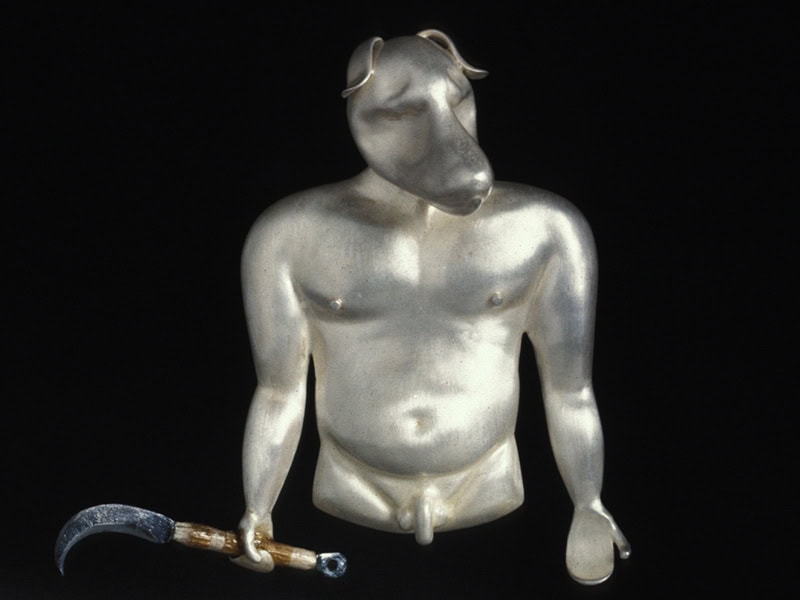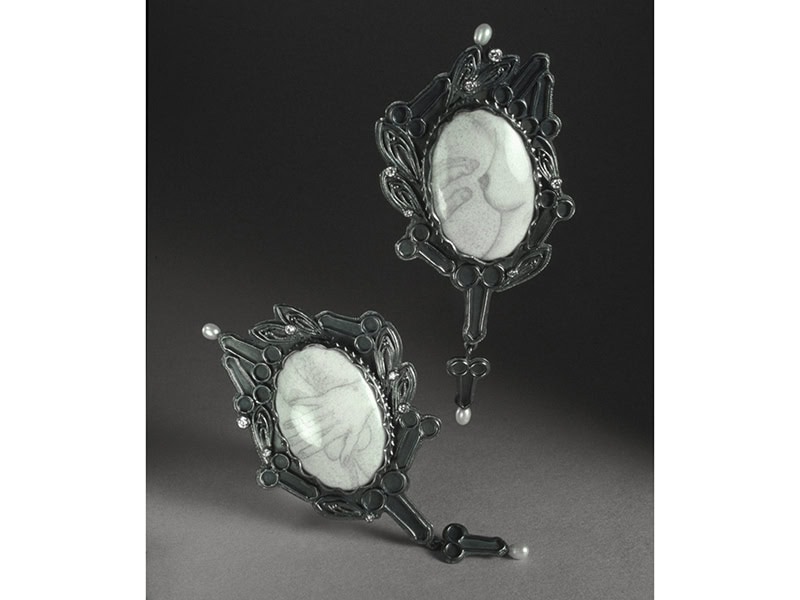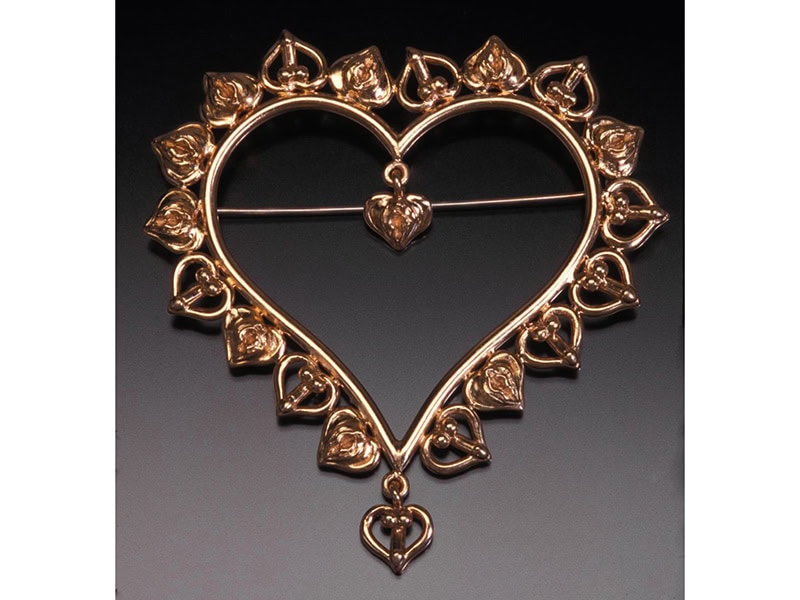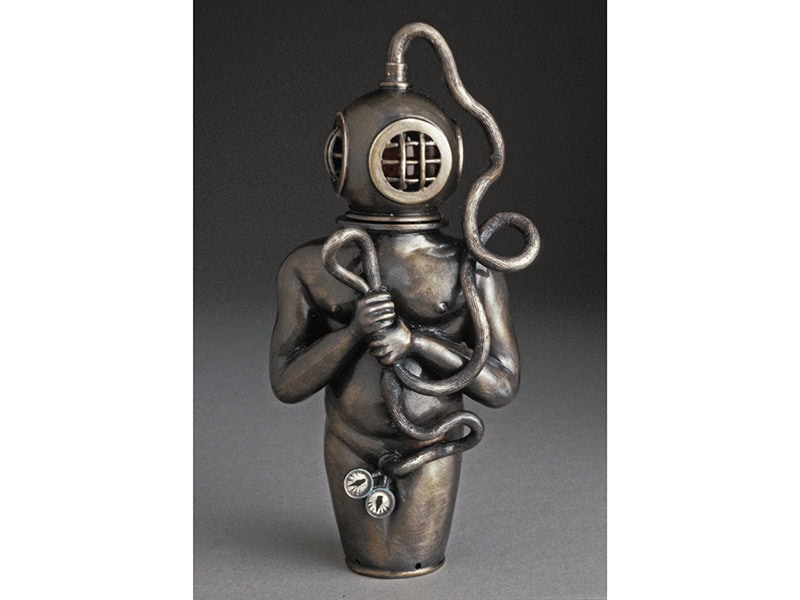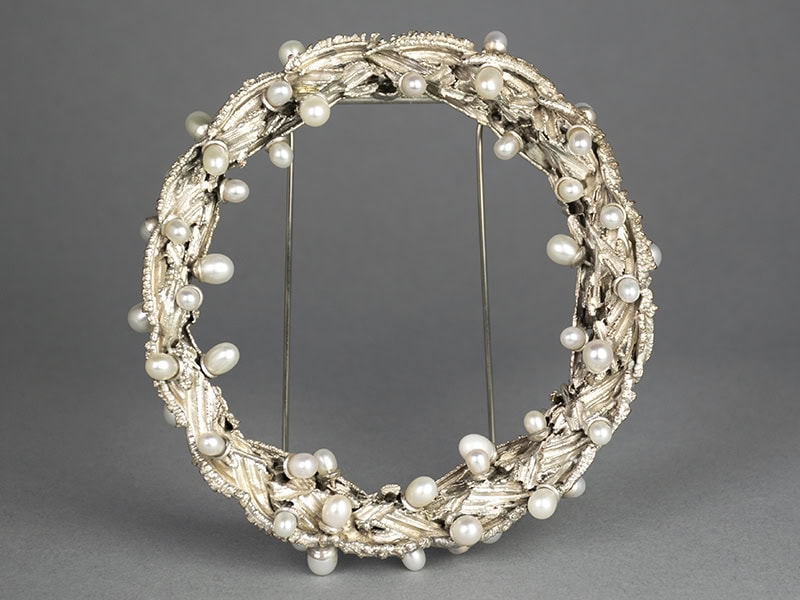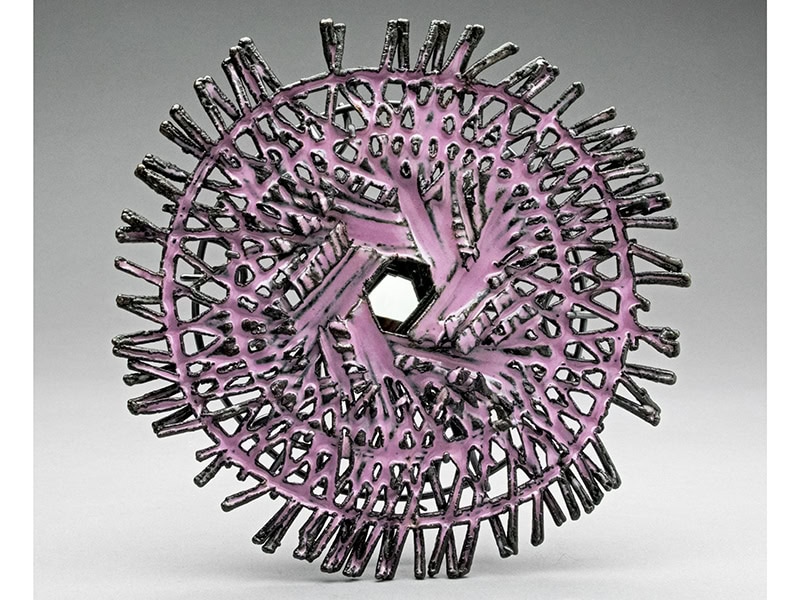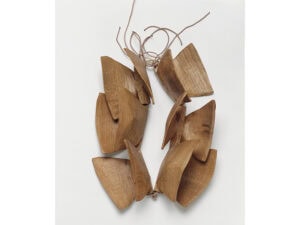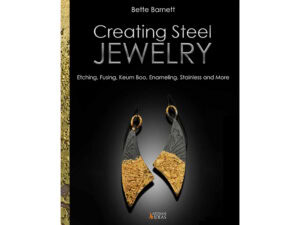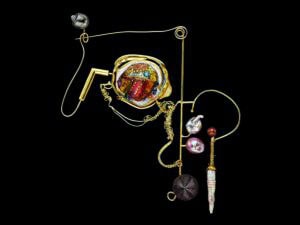
Damian Skinner and Keith Lewis, Dead Souls: Desire and Memory in the Jewelry of Keith Lewis. Stuttgart: Arnoldsche, 2023.
When I first learned a monograph would be published on the work of Keith Lewis, I immediately wanted to review it. Lewis’s work was brought up frequently in my early years of studying, whether about the work itself or our proximal sexualities. Unfortunately, the internet and general library searches yielded little to no images of his work. This was common with much of the work produced by contemporary jewelers in the 1980s and 90s. While contemporary writers and historians have made significant efforts to expose work produced during this time to larger audiences, it is a monumental, underfunded task. Lewis’s work was especially hard to source. I suspect that is due to its sexual and erotic content.
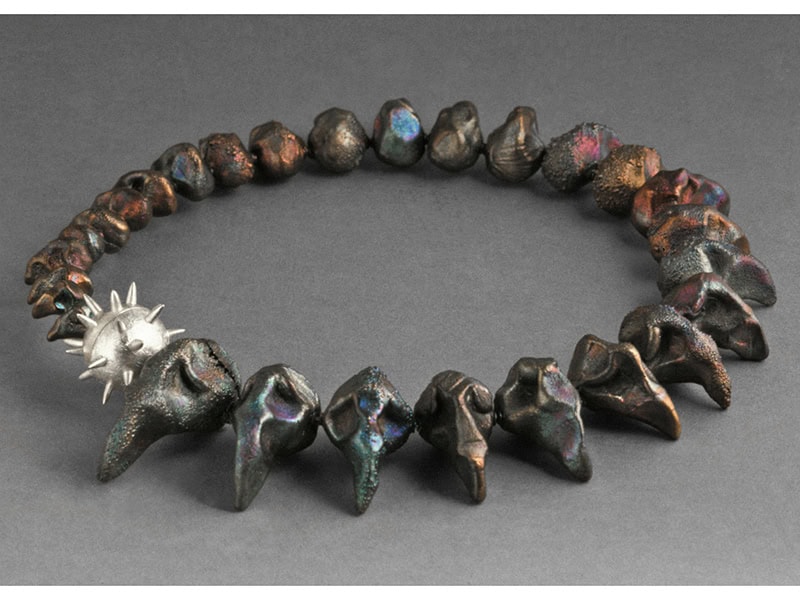
I came out in the early 2000s to knee-jerk responses of “you’re going to die of AIDS.” Sadly, the conversations from the past described in this book still linger today. As a reader, I often found myself strangely comforted to finally read a thorough and rich telling of a relatable history all too often avoided. These stories are generally passed on orally by chosen family, with few written tellings. I cannot stress enough the value of recording diverse histories to allow younger makers to see parts of themselves in the field of contemporary jewelry.
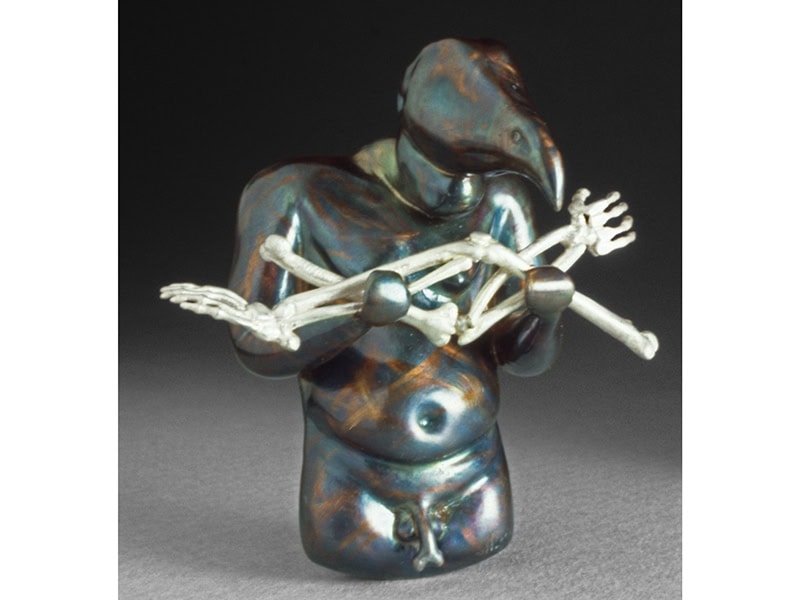
I now find myself feeling almost too connected to this book, Lewis’s work represents a significant mark in my own timeline of how I have developed my work and thinking on/with/around craft. Dead Souls feels like a long overdue contribution to the historical records, one necessary not only for jewelry history but for makers whose bodies and themes exist in the margins.
The publication is a visual feast of known (dare I say, iconic) and lesser-known works by Lewis. It gives ample space to the work, with multiple views showing the reader backs and details. The text begins with an oscillating flow, bouncing between sections by Damian Skinner and lectures previously given by Lewis, accompanied by the images that were shown during the lectures, presumably.
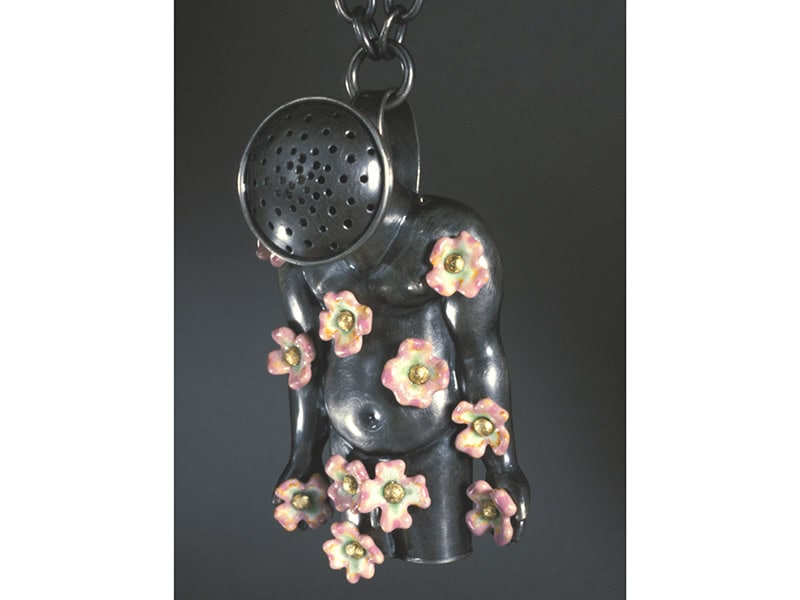
The lectures add a rich and personal layer to this publication. Lewis has a very clear and sharp view of contemporary jewelry and has never been one to bite his tongue. The strength required to be a vocal activist for AIDS research and the rights of AIDS patients clearly lingers on in his views on contemporary jewelry. Lewis does not mince words or sugarcoat for the sake of a soft landing.

I do wish that the ample quotations, mostly found in the lectures, would have been properly cited, giving the text even greater value to the classroom and academia. Lewis has an ability to weave the personal with larger narratives and theory. He is thus an invaluable resource to teach with, to aid makers who grapple with fitting the personal into how they speak and write about their work to larger general audiences.
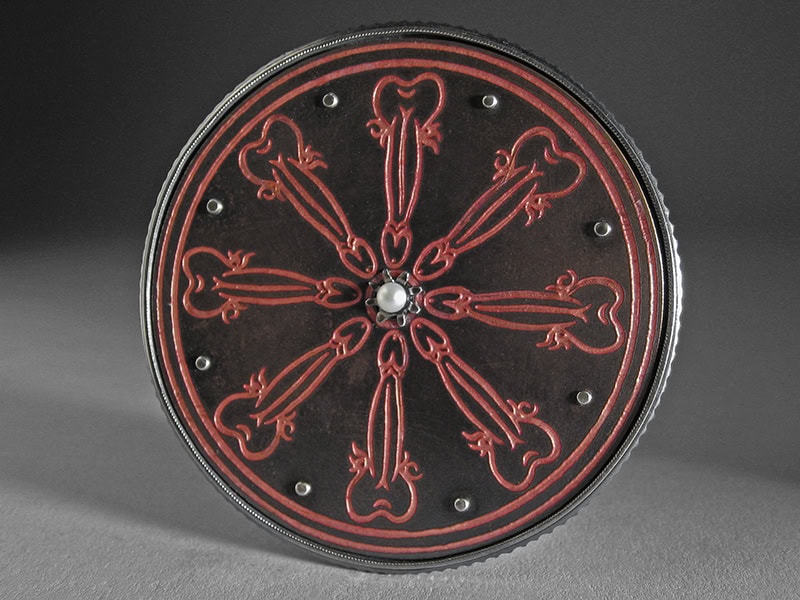
Things such as citations, historical context, and definitions are where I am let down by this publication. Lewis presented this book in Munich during Schmuck 2024, at Galerie Handwerk.[1] During his rich and captivating lecture, he recognized that in the present day his work can be read as reinforcing gender binaries or gender essentialism. Skinner gives only a small nod to this in the middle of the text, on page 118 of a 208-page book. It would have been valuable to mention this earlier, and maybe more clearly and in greater depth. Many readers may not have the time to pore over every word in this book.
My concern here lies not with the chronicling of Lewis’s work but with how it will be read by younger generations. The beginning section by Skinner, titled “Sex Education,” misses the opportunity to connect to the terms used within the text and to the way language and understanding have developed. Terms such as queer are used with specific intent throughout the book, but definitions of terms have been in flux and risk confusion for their multiplicity of meanings. How we use and think of terms changes with geography, generation, time, and circumstance, so defining how they are being used in this text would aid those who are unaware, and clue in readers who are more hyperaware of these discourses.

In the first half of the book, the writings by Skinner alternate with those by Lewis. Skinner lines things up by referencing the lectures by Lewis that will follow. This gives context, expands on things mentioned, and provides an outside view, which allows Lewis’s actual lectures to weave things more tightly and personably. The second half of the book is mostly turned over to texts by Lewis. This creates a significant shift in the rhythm. Intentionally or not, it changes how the work is digested. This break is emphasized by the visually drastic shift from the bluntly erotic to more subtle investigations around history and narrative. The reader feels left with a broken bone that is only mended by Skinner at the conclusion of the book.
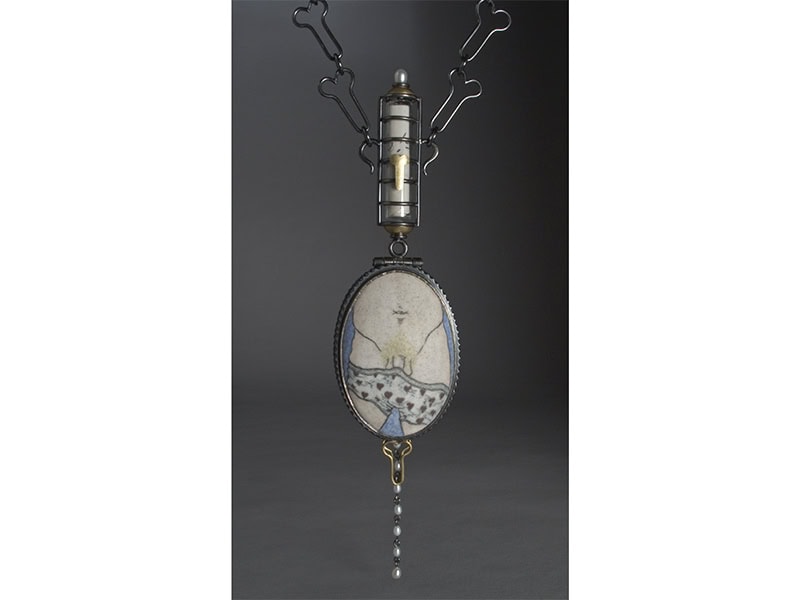
How history is approached is a question I had from the start. The book starts by describing a key piece, Boxers & Briefs. This pendant was inspired by a note passed between two individuals named Richard and Ryan. Lewis got the note from a custodian who found it while cleaning a lecture hall. Lewis, or at least the book, leads the reader to interpret this as a male homosexual exchange without knowing the authors of the note. However, the name Ryan was and still is used for those assigned female at birth. Using this work as the opener creates an unnecessary haze around concepts of fact, truth, and history and how they are deployed in Lewis’s oeuvre.
This is not to say there is anything wrong with inventing a story—“filling in the gaps,” as Skinner’s text puts it. However it is an odd piece to introduce Lewis’s work when a substantial portion of the work is an expression of lived experience. This approach creates a premise that may cause the reader to conclude that all of the work is fanciful projection or acts of aroused interpretation. In actuality, other pieces, specifically the work around AIDS, are an expression of actual events that need to be taken without doubt of veracity; there are no gaps to be filled in. I take issue not with the piece itself nor its narrative in the first part of the first chapter. It is its placement as an introduction that risks confusion and sets up the danger of dismissing the narratives of Lewis’s experiences during the AIDS epidemic as a projection, another filled-in gap. The necessary confrontational aspect of that work could become softened as a result.
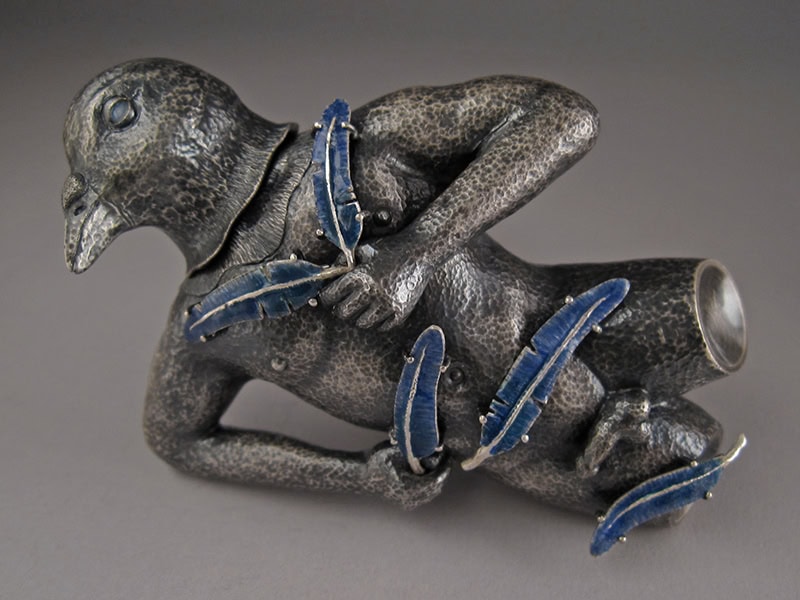
The book mostly shows and discusses Lewis’s work chronologically. I am left wanting an unpacking of what it means for artists who inhabit bodies, experiences, and geographies that have been marginalized or removed from cultural narratives to work with and interpret histories, when navigating a dominant history that has been manipulated to fit specific ideologies, and when speaking in regard to larger cultural histories. Some of this is touched on, but without great depth, specifically in the conclusion. I wanted a prompt early on, explaining where the book is going, and a frame that would either let the reader push some of these large questions out of the way or understand that they would be more vigorously discussed later—except they were not.
Perhaps I am asking too much of the text. It effectively creates a rounded and robust narrative of Lewis and his work. But I long to connect this narrative and (micro-)history more deeply to larger histories and conversations. What does it mean when this work disappears into a collector’s drawer? What parallels can we draw to other explicit imagery that could be worn? Vivienne Westwood’s Two-Cowboys T-shirt comes to mind, originally produced in 1974 and still reproduced to this day.[2] The shirt depicts two cis-gendered men wearing nothing but boots, vests, holsters, and hats, with their genitals making contact. How does class and access engage with this conversation?
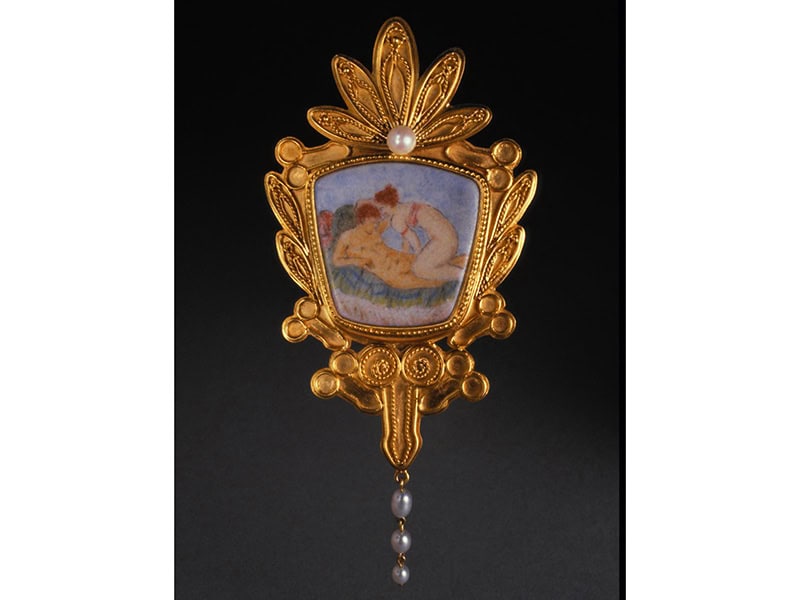
Skinner mentions speaking with a collector who owns Lewis’s Cuculla’s Brooch. He explains that part of the reason she does not wear it anymore is that there needs to be an appropriate time and moment to wear the work. I am left trying to connect what it means for work that could be considered loud or confrontational—out of the necessity to centralize talking about AIDS or sex—to exist yet be seen only in spaces deemed appropriate or safe. This contradiction begs to be unpacked.
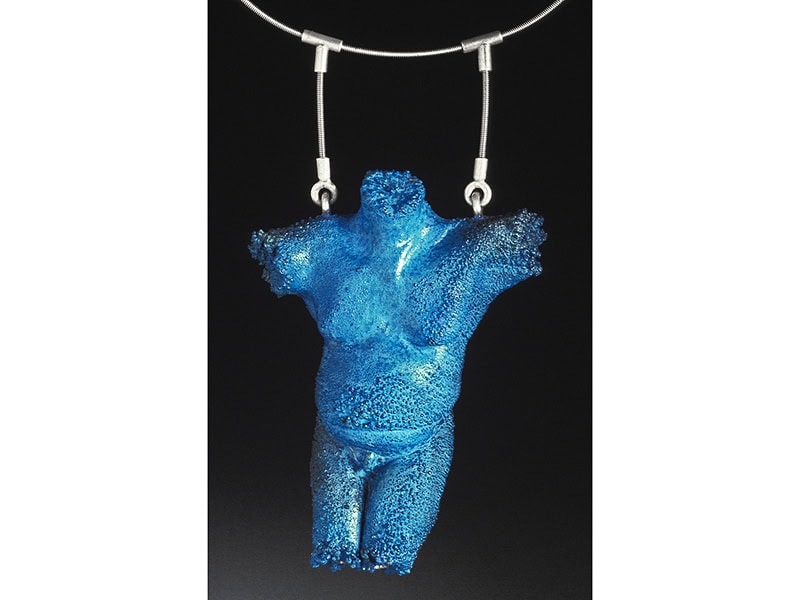
You may think I am getting overly specific. I certainly do not intend to discourage potential readers from diving into this rich and notable publication. I feel almost guilty for splitting hairs when the words and images in these pages are an invaluable addition to the tomes of writing in, on, and around contemporary jewelry. However, I know enough about Keith Lewis to know that he would expect no less than a well-thought-out reflection and a critical and meticulous eye.
You can purchase a copy of Dead Souls: Desire and Memory in the Jewelry of Keith Lewis from AJF’s bookstore, here. The book was produced through AJF’s fiscal sponsorship program, which provides financial management for projects in the art jewelry field. (For information on our fiscal sponsorship program, please go here.)

Reviews are the opinions of the authors alone, and do not necessarily express those of AJF.
We welcome your comments on our publishing, and will publish letters that engage with our articles in a thoughtful and polite manner. Please submit letters to the editor electronically; do so here.
© 2024 Art Jewelry Forum. All rights reserved. Content may not be reproduced in whole or in part without permission. For reprint permission, contact info (at) artjewelryforum (dot) org
[1] You can watch a recording of the presentation here.
[2] See this example from the collection of the Metropolitan Museum of Art.

